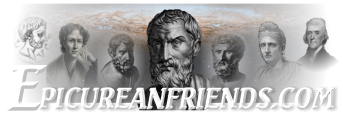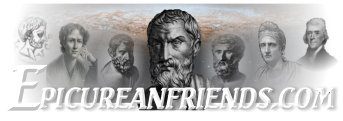Let's discuss the figure of Plato and how he is symbolized in this thread.
"School of Athens" - The figure of Plato
-
-
I believe PLATO is carrying a copy of his dialogue Timaeus where he establishes his theory of the cosmos. The Stanford Encyclopedia provides a helpful summary:
Quote"In the Timaeus Plato presents an elaborately wrought account of the formation of the universe and an explanation of its impressive order and beauty. The universe, he proposes, is the product of rational, purposive, and beneficent agency. It is the handiwork of a divine Craftsman [...] who, imitating an unchanging and eternal model, imposes mathematical order on a preexistent chaos to generate the ordered universe."
The largest-scale structures of Plato's cosmos were the heavenly bodies and the various levels they inhabited, so his pointing upward no doubt reflects his metaphysics.
He's directly engaging Aristotle to his left (our right), in the middle of the painting (seen elsewhere). This reflects the centrality of Platonic and Peripatetic philosophy to Christian theology. It also reflects the Plato-influence Augustinian and Scholatic schools of theology versus Aristotle-influenced Thomist school of medieval Christian theology.
-
It also reflects the Plato-influence Augustinian and Scholastic schools of theology versus Aristotle-influenced Thomist school
I don't want to suggest we go off-track here, and maybe a separate thread would be better, but in reading this I realize that I don't have even a thumbnail summary in my mind of the practical difference between Augustinian/Scholastic vs Thomist theology. To the extent it would help us contrast these against Epicurean views, I wonder if there is anything brief we can say to set a base for how those two camps differed from each other (as viewed from an Epicurean perspective, not trying to list all possible differences).
-
The subject of Divine Revelation is a good way to distinguish the medieval Christian theologies.
(I mis-wrote above: Scholasticism is also Aristotle-influenced)
I think the main thing is the Scholastics and Thomists believed that God provided humanity with practical reason that could be applied to understand God better by studying Nature. Thomas Aquinas' many portraits of him holding animals like Bob Ross expresses this.
So, we can see the influence of Aristotle over Plato, and the rejection of ideas like "knowledge without experience" or "truth without understanding".
-
So if the Scholastics and Thomists say that god provided humanity with practical reason which is useful for knowing how to live, as a complement to divine revelation (presumably), then what is the thumbnail summary of the Augustinian position. That human / practical reason is totally useless for ultimate questions? Would Plato agree that such would be a logical conclusion of his theories?
-
Divine Revelation within this context matches Plato's proposition that "learning" is actually an immortal soul's recollection of the Divine Truth which the soul knew prior to being born, but simply forgot after experiencing birth and associating with a human body.
To Augustinians (this might be an over-generalization, as I'm just skimming the schools), Truth is to be remembered through revelation; to Thomists, Truth is to be discovered through observation.
[edit:] I was looking for a specific term, and I just found it: ANAMNESIS . Christian theologians gobbled up Plato's theory of anamnesis and injected it into their belief system as the faithful remembrance of Christ. The Wikipedia entries:
ANAMNESIS (PHILOSOPHY)
"In philosophy, anamnesis (/ˌænæmˈniːsɪs/; Ancient Greek: ἀνάμνησις) is a concept in Plato's epistemological and psychological theory that he develops in his dialogues Meno and Phaedo and alludes to in his Phaedrus. The idea is that humans possess innate knowledge (perhaps acquired before birth) and that learning consists of rediscovering that knowledge from within. Terms that have been used to characterize this concept include Doctrine of Recollection and Doctrine of Reminiscence."
ANAMNESIS (CHRISTIANITY)
"Anamnesis (from the Attic Greek word ἀνάμνησις meaning "reminiscence" or "memorial sacrifice"),[1] in Christianity, is a liturgical statement in which the Church refers to the memorial character of the Eucharist or to the Passion, Resurrection and Ascension of Christ. It has its origin in Jesus' words at the Last Supper, "Do this in memory of me" (Greek: "τοῦτο ποιεῖτε εἰς τὴν ἐμὴν ἀνάμνησιν", (Luke 22:19, 1 Corinthians 11:24–25). In a wider sense, anamnesis is a key concept in the liturgical theology: in worship the faithful recall God's saving deeds.[2] This memorial aspect is not simply a passive process but one by which the Christian can actually enter into the Paschal mystery.[3]"
-
We're seeing I think how this fresco is really helpful for advancing basic discussion.
We see Plato pointing to the skies (to god and to his true reality).
We see Aristotle disputing that, and pointing forward, saying that reality is here (too?), but also that our reality comes from god / the prime mover.
Within that context, how would we tell a young Epicurean student to place Epicurus in this scene? How would we best imagine Epicurus gesturing or otherwise making his basic point about supernatural gods and the nature of reality?
-
Visually, placing figures in close proximity is an easy way to demonstrate familiar or intimacy, the prime example of this being the famous teacher-student relationship between Plato and Aristotle, which is the first image to which the eye is drawn.
If this trend were consistent, and Raphael had an understanding of Epicurus' biography, then we'd expect him to be placed nearest to Democritus, followed by Aristotle (I doubt that either Praxiphanes or Nausiphanes would have made the final cut).
He may also have placed him near Pyrrho, ONLY because multiple sources mention Epicurus as having admired or been fascinated by Pyrrho and his Eastern journey, even if he completely disagreed within his findings. I think this is more of a stretch.
If proximity isn't indicating relational intimacy, it may be expressing ideological tension and conflict, in which case, Epicurus should be placed near Plato, and painted in a critical, dismissive, or challenging position, which we do observe in the figure in orange to the left. Scholarship online seems to place Heraclitus and Parmenides in close proximity downstage of Plato and Aristotle, so that further indicates an expression of tension. Though, I'm not convinced of those identities. Still, placement near Plato is appropriate.
-
Another reason I agree that some placement nearer Plato would be significant is that it continues to impress me that Cicero did not seem to have an especially high impression of Aristotle, if the amount of time paid to him in "On Ends" is an indication. I understand that the Thomists may have been responsible for elevating Aristotle's stature, but I am thinking that someone who was brought up in the Ciceronian tradition (which is probably more insightful as to the significance of the Stoics and Epicureans) would not have Aristotle in as central a location. I am gathering that while Epicurus agreed more with Aristotle than with Plato, that the ancient Epicureans probably considered Aristotle little more than a watered-down Platonist.
Unread Threads
-
- Title
- Replies
- Last Reply
-
-
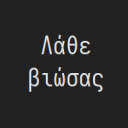
-
Epicurus' Public Domain Translations - All At Once In One Place 7
- TauPhi
April 2, 2025 at 5:46 PM - General Discussion
- TauPhi
April 4, 2025 at 3:25 PM
-
- Replies
- 7
- Views
- 443
7
-
-
-

-
Anniversary of the Founding of Alexandria in 331 BC (Mon, Apr 7th 2025)
- Joshua
April 3, 2025 at 10:16 PM - General Discussion
- Joshua
April 3, 2025 at 10:16 PM
-
- Replies
- 0
- Views
- 140
-
-
-
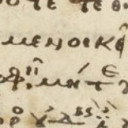
-
A Lovely Little Way to Refer to Memories
- Don
March 30, 2025 at 12:17 AM - General Discussion
- Don
March 30, 2025 at 12:17 AM
-
- Replies
- 0
- Views
- 225
-
-
-

-
New Religious Landscape Study from Pew Research 26
- Don
February 26, 2025 at 10:40 PM - General Discussion
- Don
March 28, 2025 at 2:35 PM
-
- Replies
- 26
- Views
- 1.8k
26
-
-
-
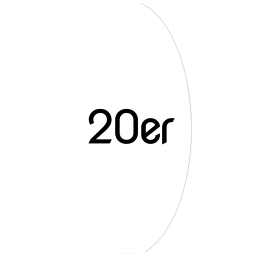
-
Potty Language
- Eikadistes
March 27, 2025 at 10:57 AM - General Discussion
- Eikadistes
March 27, 2025 at 10:57 AM
-
- Replies
- 0
- Views
- 189
-
